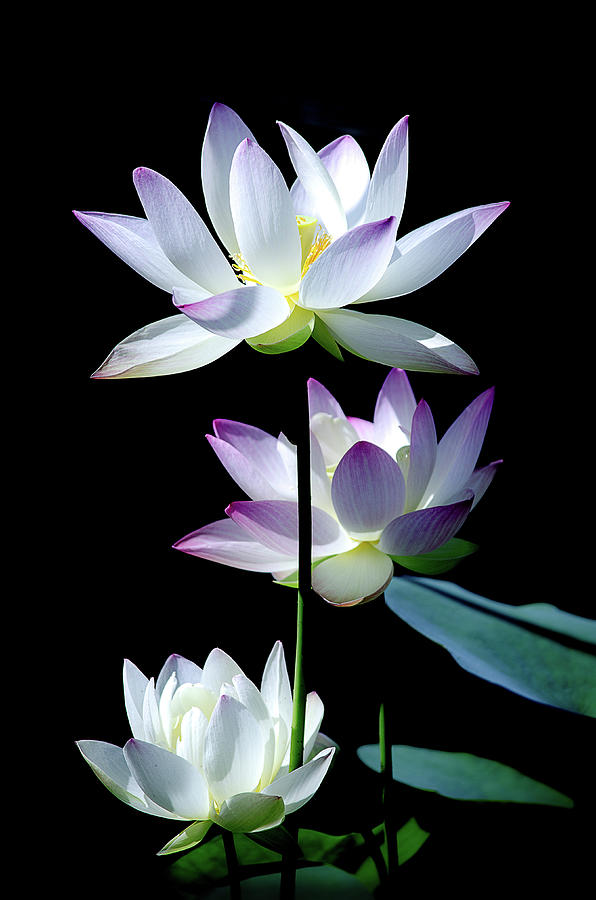

The minimum water depth is about 30 cm (12 in). The sacred lotus grows in water up to 2.5 m (8 ft) deep. The genome of the sacred lotus was sequenced in May 2013. Both Nymphaea caerulea and Nelumbo nucifera contain the alkaloids nuciferine and aporphine. The traditional sacred lotus is only distantly related to Nymphaea caerulea, but possesses similar chemistry. In 1994, a seed from a sacred lotus, dated at roughly 1,300 years old ± 270 years, was successfully germinated. Lotus seeds can remain viable after long periods of dormancy. Two other species known to be able to regulate their temperature include Symplocarpus foetidus and Philodendron selloum. Studies published in the journals Nature and Philosophical Transactions: Biological Sciences were in 19 important contributions in the field of thermoregulation in plants. They suspect the flowers may be doing this to attract coldblooded insect pollinators. Seymour and Paul Schultze-Motel, physiologists at the University of Adelaide in Australia, found that lotus flowers blooming in the Adelaide Botanic Gardens maintained a temperature of 30–35 ☌ (86–95 ☏), even when the air temperature dropped to 10 ☌ (50 ☏). Researchers report that the lotus has the remarkable ability to regulate the temperature of its flowers to within a narrow range just as humans and other warmblooded animals do. For example, the Chinese variety qian ban lian ("thousand petals lotus") can have between 30 petals in a single blossom and the Japanese variety ohmi myoren ("strange lotus") can have between 20 petals, the greatest number recorded for any species of plant. Some cultivated varieties have extraordinary numbers of petals. The leaves may be as large as 80 cm (31 in) in diameter, while the showy flowers can be up to 30 cm (12 in) in diameter, but fourteen inches (35 centimeters) has been frequently reported. The leaf stalks (petioles) can be up to 200 cm (6 ft 7 in) long, allowing the plant to grow in water to that depth, The peltate leaf blade or lamina can have a horizontal spread of 1 m (3 ft 3 in). The flowers are usually found on thick stems rising several centimeters above the leaves. The lotus roots are planted in the pond or river bottom soil, while the leaves float on the water's surface or are held well above it. Nelumbo nucifera is also known as Egyptian bean.

The lotus is used as a symbol by India's Bharatiya Janata Party (BJP). It is the national flower of India and Vietnam. 3,000 years) of being cultivated for its edible seeds, and it is commonly cultivated in water gardens.

Part of this range (namely South India, Sri Lanka, Island Southeast Asia, and Australasia) may be the result of historic human introductions, but taxonomic authorities consider the species native to these areas. It has a very wide native distribution, ranging from India and Sri Lanka (at altitudes up to 1,400 m or 4,600 ft in the southern Himalayas ), through northern Indochina and East Asia (north to the Amur region the Russian populations have sometimes been referred to as " Nelumbo komarovii"), with isolated locations at the Caspian Sea, as well as virtually all of Island Southeast Asia, New Guinea and northern and eastern Australia. Therefore, the Chinese regard the plant as a symbol of longevity.

Under favorable circumstances, the seeds of this aquatic perennial may remain viable for many years, with the oldest recorded lotus germination being from seeds 1,300 years old recovered from a dry lakebed in northeastern China. During flood conditions, sediments containing these seeds are broken open, and the dormant seeds rehydrate and begin a new lotus colony. While some sprout immediately, and most are eaten by wildlife, the remaining seeds can remain dormant for an extensive period of time as the pond silts in and dries out. Stands of lotus drop hundreds of thousands of seeds every year to the bottom of the pond. Lotus plants are adapted to grow in the flood plains of slow-moving rivers and delta areas. It is sometimes colloquially called a water lily, though this more often refers to members of the family Nymphaeaceae. Nelumbo nucifera, also known as sacred lotus, Laxmi lotus, Indian lotus, or simply lotus, is one of two extant species of aquatic plant in the family Nelumbonaceae. British 19th Century, East Indian Lotus (Nelumbo nucifera), late 19th century, National Gallery of Art, NGA 52325


 0 kommentar(er)
0 kommentar(er)
